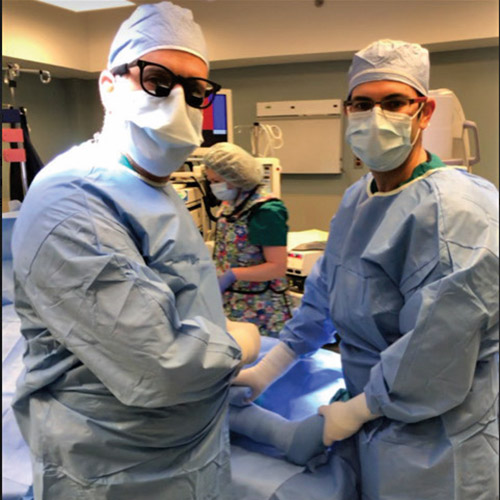
Ankle fractures, another term for a broken bone(s), is a partial or complete break in a bone in or around the ankle joint. Fractures in the ankle can range from the less serious avulsion injuries (small pieces of bone that have been pulled off during a ligament tear) to severe shattering-type breaks of the tibia, fibula or both. The “ankle” joint consists of 3 bones; the tibia, fibula, and the talus, which is the bone that connects the foot to the leg.

Ankle fractures are common injuries most often caused by the ankle rolling inward or outward. This can occur during a mechanical fall or a simple misstep. Many people mistake an ankle fracture for an ankle sprain, but they are quite different and therefore require an accurate and early diagnosis. They sometimes occur simultaneously.

Symptoms of an ankle injury include pain, swelling, possible skin blistering, bruising and possibly the inability to put weight on the injured foot. With less severe breaks, one can often bear weight.

Following an ankle injury, it is imperative to have the injury evaluated by a foot and ankle specialist for proper diagnosis and treatment. If you are unable to do so right away, go to the emergency room or an urgent care center. Then, follow up with a podiatrist or foot and ankle surgeon as soon as possible for a more thorough assessment. Many orthopedic practices will have same-day appointment slots to care for these types in injuries. X-rays are very helpful in differentiating an ankle sprain from a fracture.

If the ankle is broken, this does not mean you need to have surgery. Many types of ankle fractures are stable and do not need surgical intervention. Sometimes, a CAT scan or MRI will be ordered to better assess the fracture and help with the doctor’s decision making.
Treatment of ankle fractures depends upon the type and severity of the injury. At first, the foot and ankle surgeon will want you to follow the R.I.C.E. protocol: This stands for Rest, Ice, Compression, and Elevation. Many patients are placed in a CAM (controlled ankle motion) boot to protect the foot but still allowing you to put some weight on it.
When the ankle fracture is unstable or displaced, surgery is needed to repair the fracture and other soft tissue related injuries, if present. The foot and ankle surgeon will select the procedure that is appropriate for your injury.
If you sustained an ankle injury, call us at the Center for Musculoskeletal Disorders.
By Daniel Popowitz, DPM FACFAS
Dr. Daniel Popowitz is a Board Certified Foot and Ankle Surgeon and Podiatrist. Dr Haydee Brown is a Board Certified Orthopedic Surgeon and Foot and Ankle Specialist. Find us on Instagram @FootandAnkle_CMD @DrHaydeeBrown or on the web www.nynjcmd.com. We look forward to helping you.








